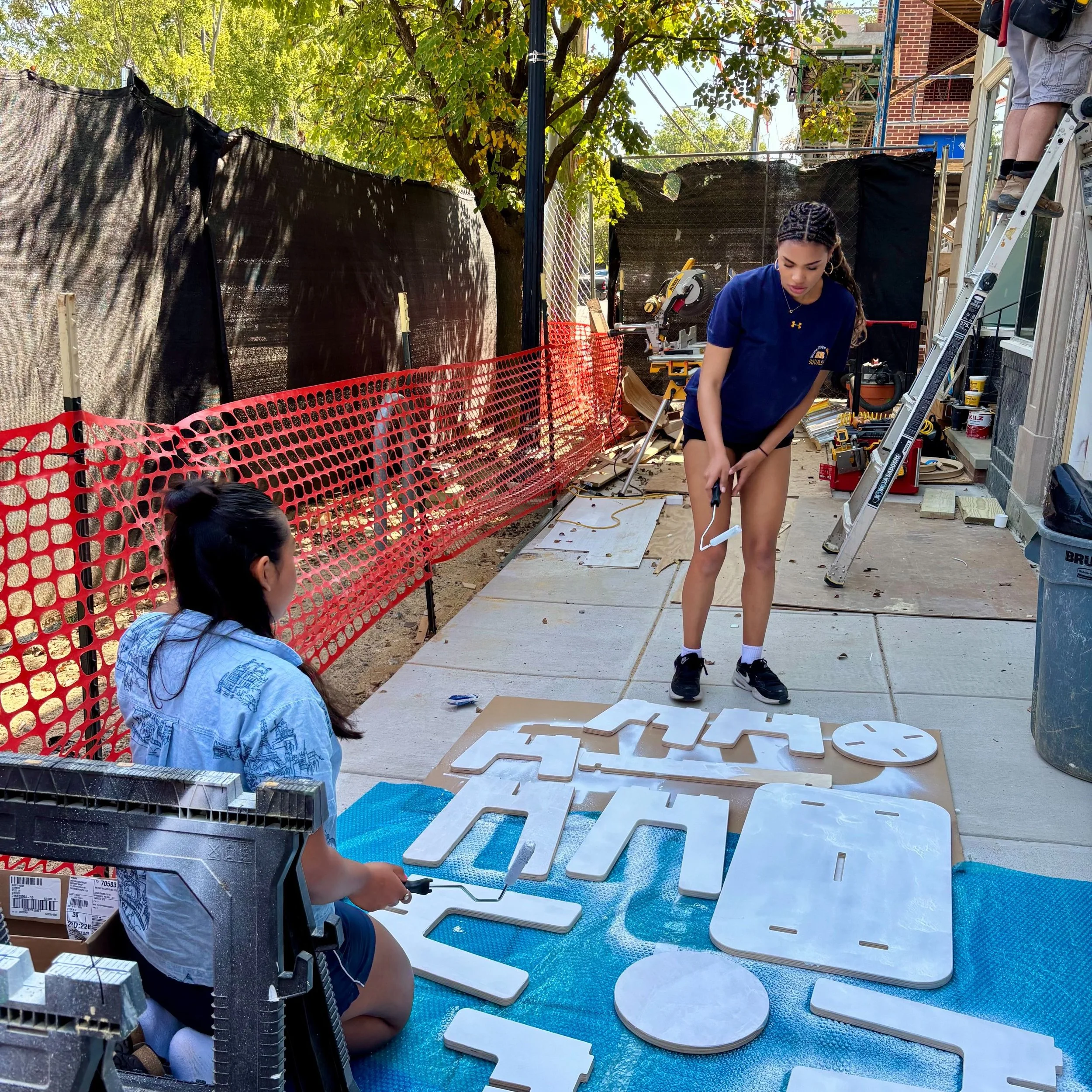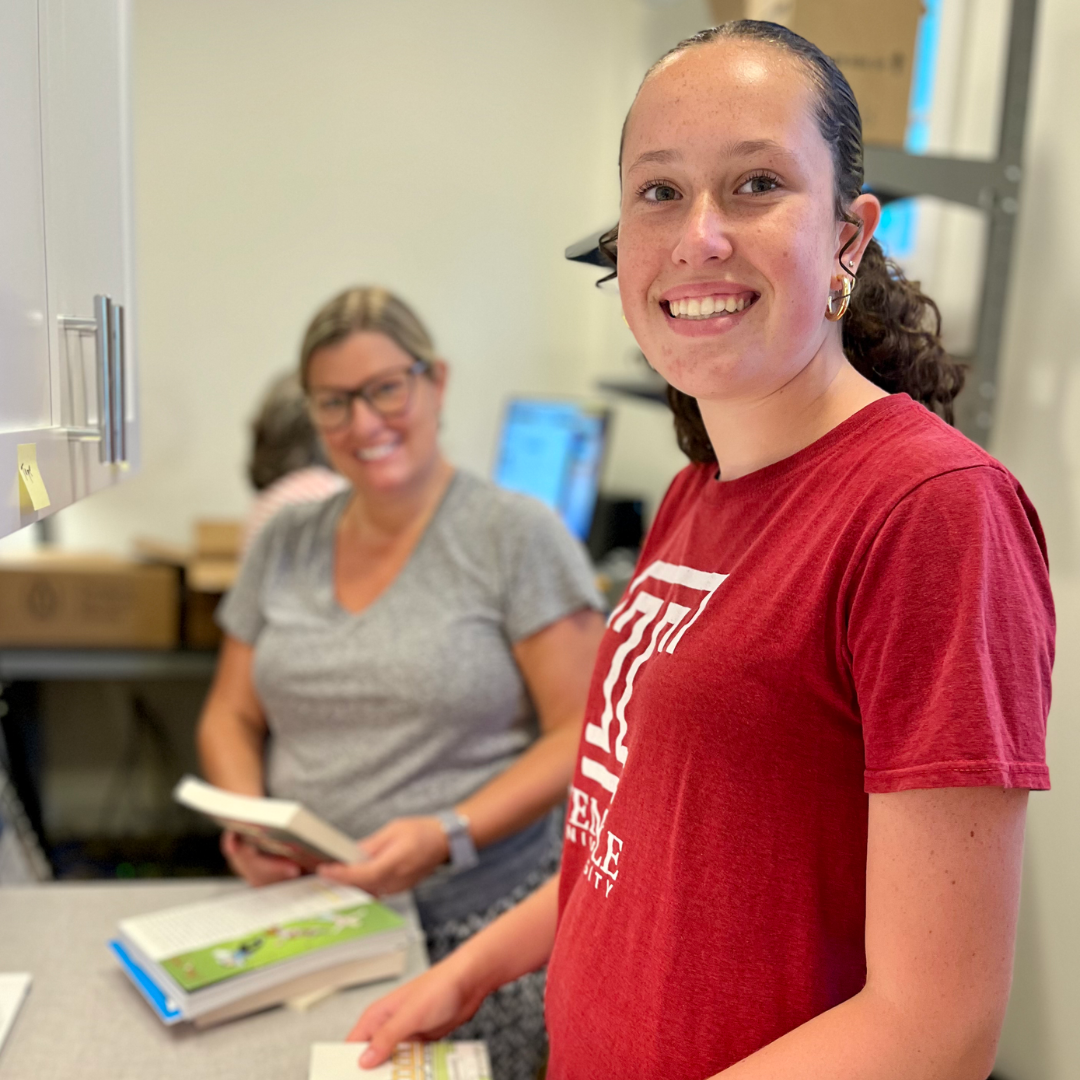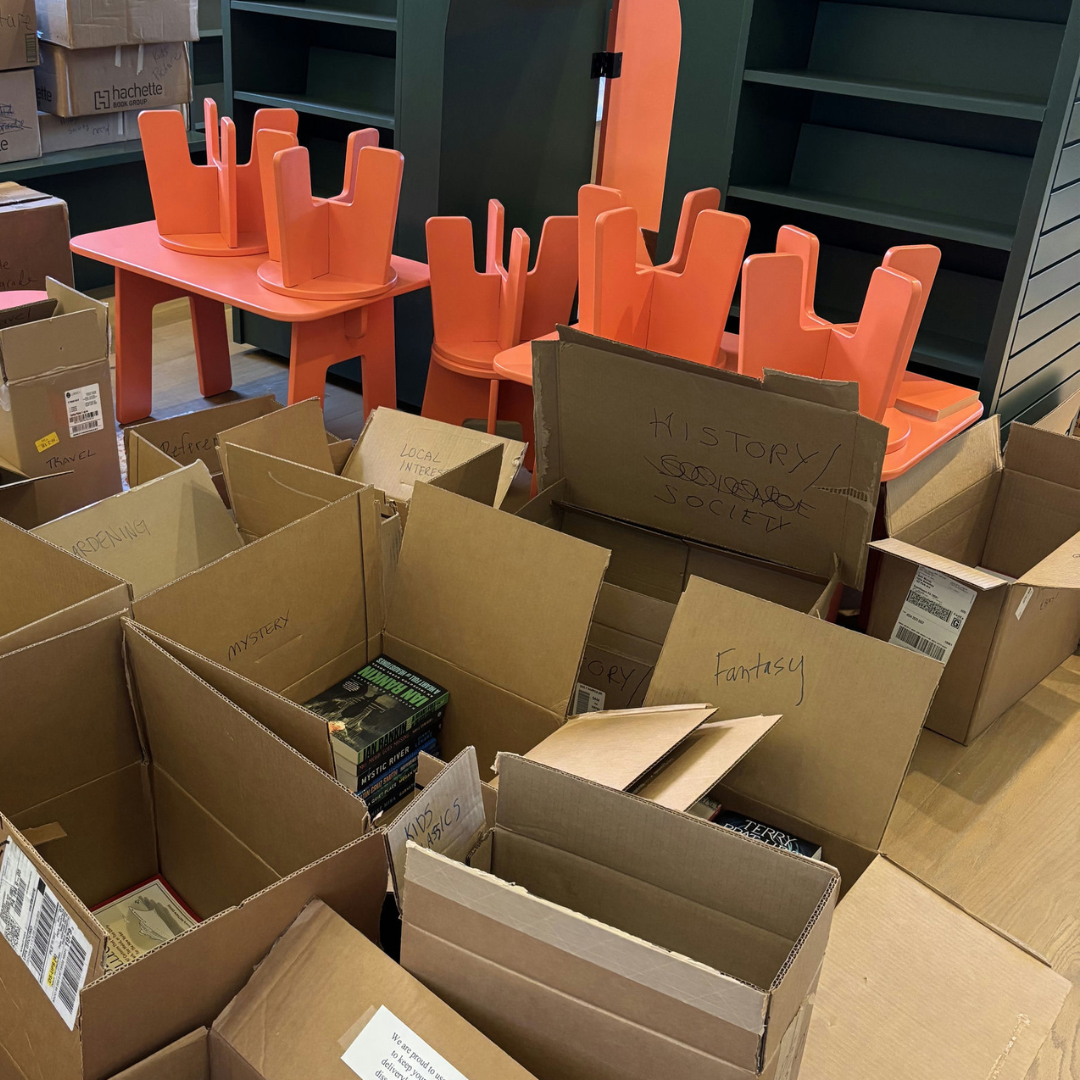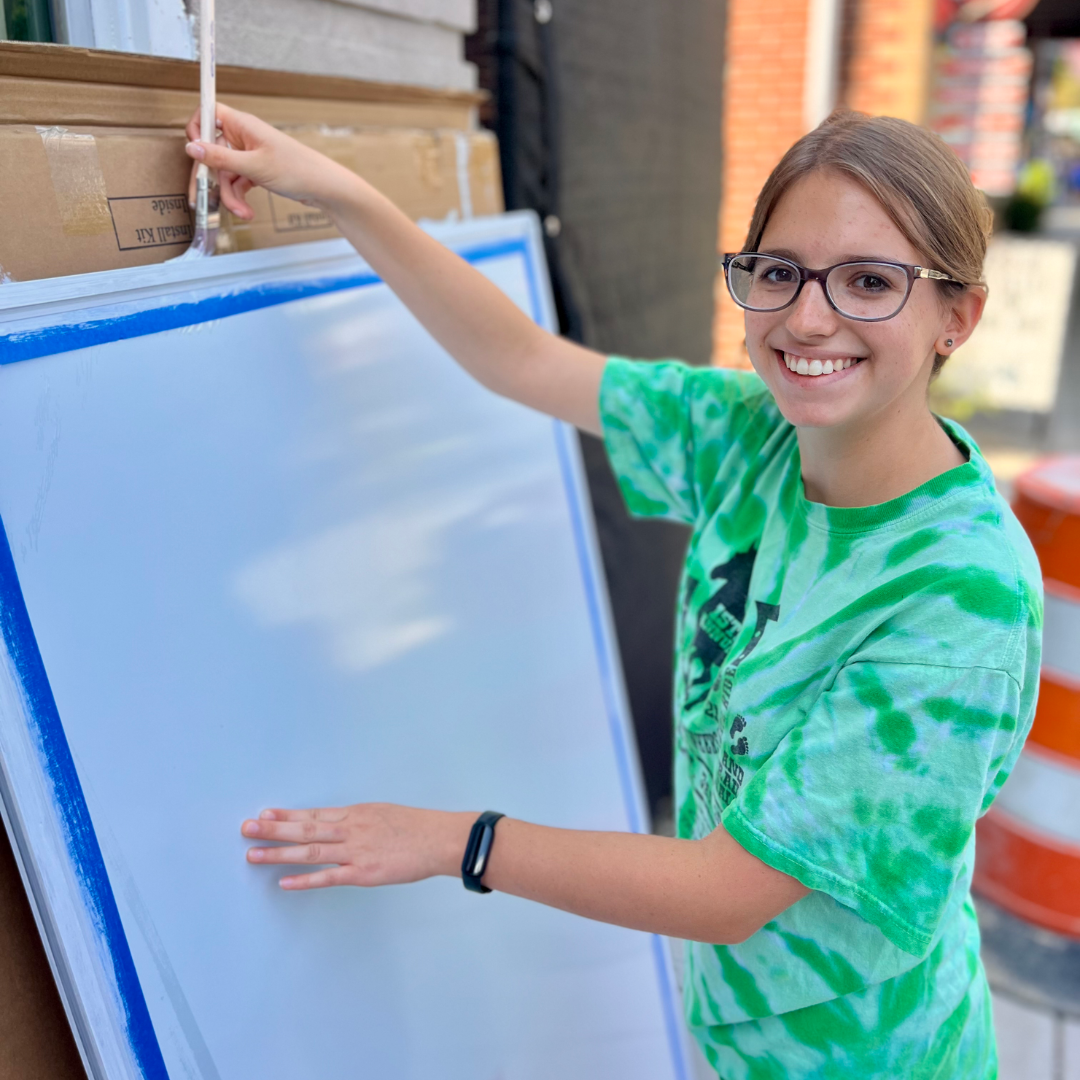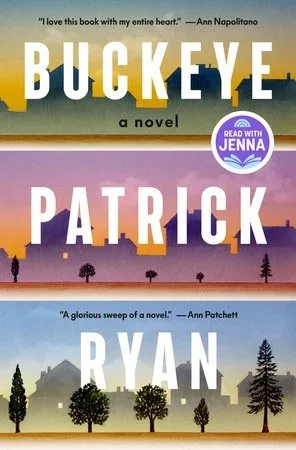Reading Memories and a Mountain of Boxes
“When I was a kid, there was a store about a mile from our house,” Su says. “My mother and I used to walk there every couple of days and get books, then walk back home and read them.”
“I wasn’t a big reader as a child,” Beth says. “But I remember reading Charlotte’s Web. I was almost at the end, and I realized that Charlotte was going to die! I ran to my mother in tears. It had a powerful effect on me.”
“I used to get in trouble in school for not paying attention,” Lori says. “Because I was always reading.”
It’s Saturday morning, exactly three weeks before Celia Bookshop’s grand opening, and the nine members of our staff are together in the store for the first time. Around us, empty bookcases are labeled with pieces of painter’s tape: FICTION, GARDENS, PICTURE BOOKS, BIOGRAPHY, and so on. We hope to get our official signage later in the week, but for now this will have to do. We sit in a circle, eating scones from Pastry Pants up the street, and sharing early childhood reading memories. Then we get to work.
Karla and Gabby start painting children’s furniture mountain mist (a very light green), to match the shelves in our kids’ section.
Photos: Rachel Pastan
Others crowd into the office to “receive” cartons of books one by one into our inventory management system. Lori works the computer and the scanner, Katy affixes the labels spun out of the label printer, and McKenna carries each book into the maze of labeled cartons (FICTION, GARDENS, PICTURE BOOKS, BIOGRAPHY, and so on), searching out the right one to put it in.
Photos: Beth Murray
Later, when the store’s less dusty, we’ll take the books out of the boxes and put them on the shelves. By the time this process is over, every single book in the store will have passed through our hands.
Every now and then, the work is interrupted by someone exclaiming, “Oh, I love this book!” I love seeing our staff excited about the books we ordered. I love discovering which pristine object of paper and glue and ink contains a story that matters enough to one of us to spark an exclamation of delight.
For today, this experience is just ours. But soon, on October 4, we’ll open our doors and invite you in to share it.
Photos: Beth Murray
Recommendations
Buckeye
By Patrick Ryan
Cal Jenkins was born in 1920 with one leg shorter than the other. Just two inches shorter, but that was enough to make plenty of things difficult. Balancing on a bicycle took twice as long for him to learn as it did for other kids. Track and field was out of the question. So was walking without a pronounced limp or going up and down a set of stairs without securing himself on the railing–until his father, amateur carpenter and junk collector, improved Cal’s condition by carving a new, thicker sole out of tire rubber and nailing it onto his left shoe.
Buckeye opens with the description of a small flaw–a leg two inches too short–and the minor yet painful changes it causes in a boy’s life. Also the individual ingenuity of a father trying to make his son’s life easier. The book will go on to encompass larger flaws, and more painful consequences, exploring both the possibilities and the limits of familial love to soften them.
Throughout, Patrick Ryan’s prose is as plain, clear, and brimming with the specificity of life as it is in these opening sentences. I find myself wanting to call it Midwestern prose, fitting for a book that documents life in one small Ohio town over much of the twentieth century, using two families whose lives are entwined in complicated and moving ways as its lens. (“Buckeye” is a nickname for Ohioans.)
But although the book is grounded in the ordinary, it is also interested in the extraordinary. It takes us briefly to two different wars, and also into a small, quiet room where a woman finds she can sometimes contact the spirits of the dead.
War, and what it does to people, gradually emerges as a main subject of the novel, along with love, and what it means to be a parent. The unembellished prose with which Ryan paints such deep and nuanced portraits lets this handful of Buckeyes shine through.
Storm Pegs: A Life Made in Shetland
By Jen Hadfield
Recently, kayaking with my sister, Tash, we rounded the headland of the small island where I now live. We slipped between the sharp teeth of tumbled stacks, we let the gentle swell ease us into a long, low-ceilinged cave. It terminated in a blunt wall like the back of the throat, but was connected to another cave by a snoring tunnel, through which the swell broke with an echoing gurgle and a smack. I held my breath and nosed further in, irrationally terrified, while her confident exclamations echoed off the rocky roof.
Looking down through the water, I was almost afraid of what I might see, but it was just macaroon-pink sea urchins, slowly flailing kelp, and pale blue water, achingly clear. I have walked that headland, crossing the roof of the cave, under its pelt of stony soil and heavily grazed grass many times, never knowing it was there.
After living in Shetland for seventeen years, I still feel as if what I know about my home is next-to-nothing.
At the beginning of her astonishingly beautiful memoir, poet Jen Hadfield describes the landscape of her Scottish island home as akin to a living body. The wall at the end of the cave is “like the back of the throat.” The connecting tunnel snores. Tumbled stacks have “sharp teeth.”
The book is a love letter to Shetland: its landscape, weather, and inhabitants. Also, and especially, to the Shetlandic language–or dialect–or whatever you want to call it. (A friend once shared with me the linguists’ truism that a language is a dialect with an army and a navy.) Hadfield particularly rejoices in Shetlandic's myriad words for specific moods of water, sky, and weather, words like da ar’ris, meaning “the last weak movement of a tide before still water.”
Throughout the book, as in this opening, she makes us see the world in a new way: urchins as pink as macaroons (but does she mean macarons?) and kelp flailing.She takes us with her under the surfaces of everything, the way she and her sister glide into this cave below the place she walks daily, alert to every gurgle and smack.
Songs for Other People’s Weddings
By David Levithan and Jens Lekman
Let’s start at the urinal.
Two men are standing unnaturally close to one another, which would ordinarily be a severe breach of urinary etiquette, especially when the dividers are as ineffective as they are here. But in this instance, the breach is entirely pardonable, because these two men, Jun and Arthur, have just gotten married. Also, they are wearing a gigantic tuxedo that’s been tailored for two people to share.
The white shirts underneath are sewn together with a big bowtie on the top. The pants are appropriate for both a formal occasion and a three-legged race. The fly has been inconveniently placed.
What can you say about an opening line like that? It definitely gets your attention!
The second paragraph goes on to describe a somewhat absurd situation in language–“severe breach of urinary etiquette”–that you can read as either earnest or tongue-in-cheek. This balancing act between seriousness, absurdity, and a kind of knowing irony continues throughout the book, which follows a famous Swedish singer-songwriter known as J as he plays at a whole bunch of weddings–more than a few of which are more than a little wacky–while also trying to resolve his complicated relationship with his girlfriend V.
The novel is a very fun collaboration between writer David Levithan and Swedish singer-songwriter Jens Lekman, who has written seventeen songs for the seventeen weddings chronicled in the book. I listened to the novel on audio and got to hear Lekman sing them at all the right moments, which was a delight. If you read the book on paper or electronically, though, you can still listen to the playlist on your phone.
To receive this newsletter in your inbox, please sign up here.
